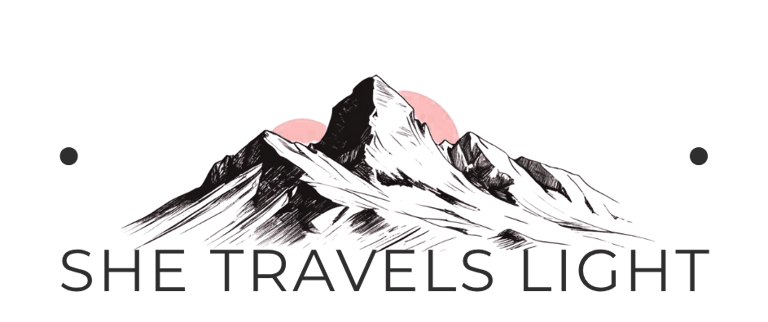Backpacking Peru: The Hiker’s Challenge (2 weeks)
Discover Peru’s most breathtaking landscapes with this 2-week hiking itinerary through the Cordillera Blanca. From glacier lakes to snow-capped summits, this route is for those who come for the mountains, and want to feel every step of the altitude. Part of the Peru Itinerary Series for Adventurous Female Backpackers.
Backpacking Peru: The Hiker’s Challenge (2 weeks)
Discover Peru’s most breathtaking landscapes with this 2-week hiking itinerary through the Cordillera Blanca. From glacier lakes to snow-capped summits, this route is for those who come for the mountains, and want to feel every step of the altitude. Part of the Peru Itinerary Series for Adventurous Female Backpackers.
03/11/2025 • 8 min read
If you come to Peru for the mountains, this is where you’ll want to be.
The Cordillera Blanca is home to some of the most beautiful hikes in South America — glacier lakes, high passes, and snow-capped peaks that make the long climbs worth every breath.
This 2-week itinerary is for hikers who want to stay close to nature and spend their days outdoors, exploring the area around Huaraz and the trails that start from there. It’s a mix of day hikes and rest days to help you adjust to the altitude and enjoy the mountain towns in between.
Here’s how to make the most of your time in Peru’s high Andes — and challenge yourself in one of the most stunning regions in the country.
Some hikes and activities in this itinerary require advance planning. For example, Nevado Mateo requires a certified guide and mountaineering gear, Laguna Llaca needs private transportation to the trailhead, and the Laguna 69 Panoramic Route should be booked through a tour operator (read along). With Akilpo Hostel you can get good advice on the different trails in the area, book guides, trips, and rent equipment from them, even if you don't live at the hostel. We did it with the above mentioned places, and it was amazing. For Laguna Churup and Laguna 513 we went there for only advise - all for free.




Take it slow. Your body needs time to adjust to the high altitude. Walk around town, sip coca tea, and get a feel for the thin air of the Andes. Visit the local market for fresh fruit and snacks, or head to the Plaza de Armas to people-watch and enjoy the mountain views.
Would also be a good day to visit Akilpo Hostel to get guidance and book your adventures in advance.
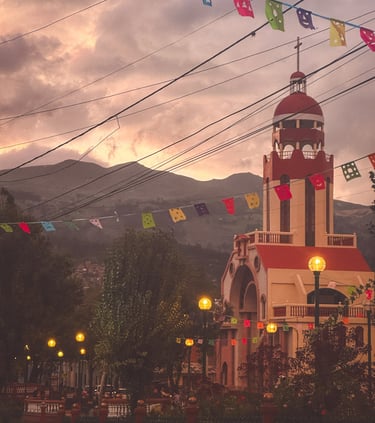

Day 1: Arrival in Huaraz
3,000 meters above sea level
Iglesia San Francisco, Huaraz
This is the perfect acclimatization hike. The trail starts just outside Huaraz and winds through small villages and farmland. You’ll pass locals herding sheep and see traditional adobe homes. At the top, you’re rewarded with sweeping views of the Cordillera Blanca reflected in a peaceful lake.
How to get there: Colectivo to Pitec, departs from Av. Agustin Gamarra. Advice with your hostel.
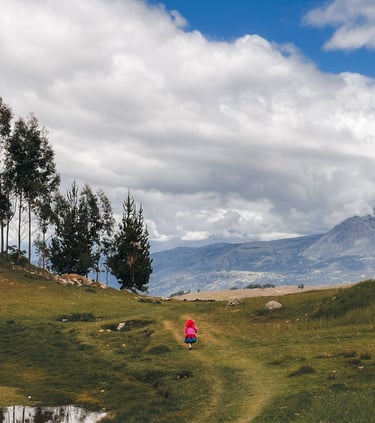

Day 2: Wilcacocha Hike
3,700 meters above sea level • 570 m Elevation • 6 km Roundtrip • 4 hrs
Quechua woman on the trailhead
Short but intense. This hike includes steep ascents, rocky paths, and even a few rope-assisted sections. The lake itself is a deep blue gem nestled beneath jagged peaks. It’s a great test of your fitness and a taste of the dramatic scenery to come.
How to get there: Colectivo to Pitec, departs from Av. Agustin Gamarra. Advice with your hostel.
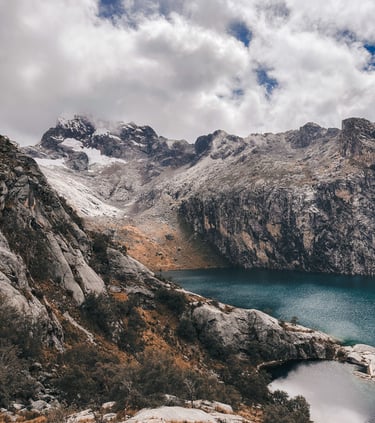

Day 3: Laguna Churup
4,450 meters above sea level • 660 m Elevation • 10 km Roundtrip • 5 hrs
Laguna Churup
Your legs will thank you. Head to Baños Termales Monterrey or Chancos Thermal Baths for a soak in naturally heated pools. Alternatively, enjoy a slow breakfast, browse artisan markets, or catch up with loved ones.
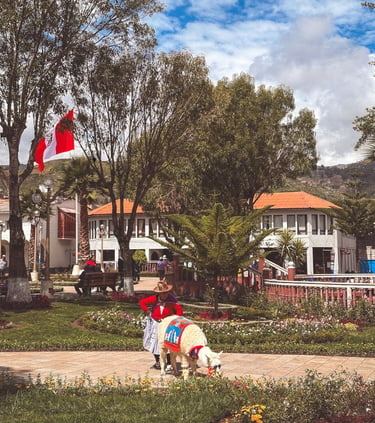

Day 4: Rest Day or Hot Springs
3,000 meters above sea level
Center of Huaraz
A hidden gem. The drive to the trailhead is bumpy and remote, but the reward is a quiet valley surrounded by glaciers. The hike is relatively gentle, and you’ll likely have the lake all to yourself. Bring snacks and take your time.
How to get there: Organise in advance with Akilpo Hostel.

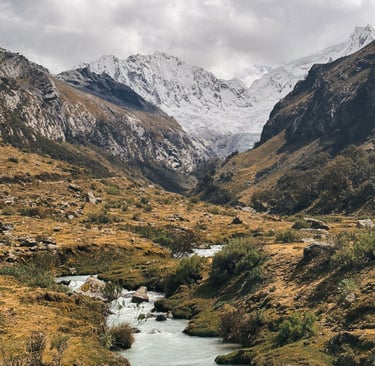
Day 5: Laguna Llaca
4,500 meters above sea level • 620 m Elevation • 8 km Roundtrip • 5 hrs
The trailhead to Llaguna Llaca
This hike feels like stepping into a dream. The trail is less trafficked, and the scenery is surreal — think jagged peaks, icy rivers, and a lake so blue it looks unreal. It’s a long day, but the solitude and beauty make it unforgettable.
How to get there: Colectivo to Carhuaz (advise with your hostel), then taxi to Shonquilpampa - remember to plan with the taxi driver that he will come back for you.
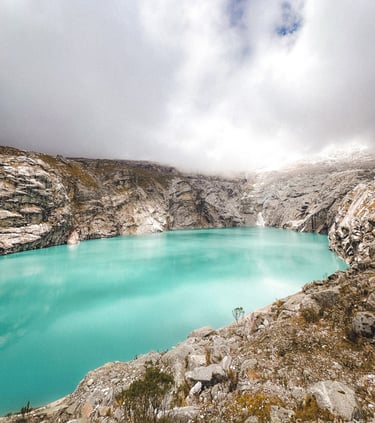

Day 6: Laguna 513
4,400 meters above sea level • 865 m Elevation • 12 km Roundtrip • 6 hrs
Laguna 513
If you’re feeling adventurous, book a beginner-friendly climbing session with Andean Climbing. They provide gear and guidance for a safe and thrilling experience. Otherwise, enjoy another slow day in Huaraz — maybe try a cooking class or visit the regional museum.
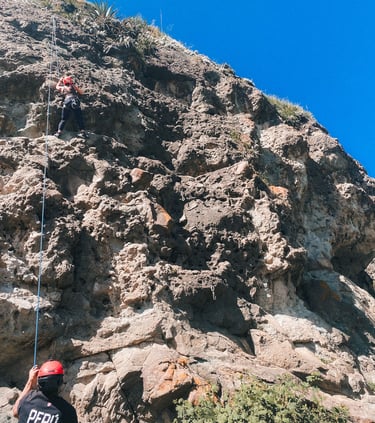

Day 7: Rest Day or Rock Climbing
3,000 meters above sea level
Climbing with Andean Climbing
A long but relatively flat hike that offers incredible views of snow-capped peaks and alpine meadows. You can rent a mountain bike and ride part of the way if you’re up for a challenge. This is a great day to soak in the vastness of the Andes.
How to get there: Colectivo to Llupa or taxi to Quilcayhuanca gate. Advise with your hostel.
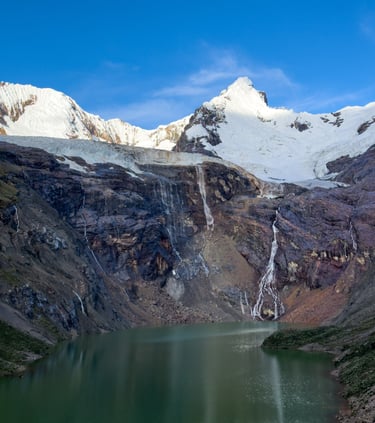

Day 8: Laguna Tullpacocha
4,350 meters above sea level • 270 m Elevation • 22 km Roundtrip • 7 hrs
The trailhead to Laguna Tullpacocha
Visit the Mercado Central for local produce, handmade crafts, and street food. Try a fresh juice or a plate of lomo saltado. This is also a good day to recharge your energy for Laguna 69 and prepare by loading up on snacks and water.


Day 9: Rest Day or Market Visit
3,000 meters above sea level
Churros from street stall
The crown jewel of day hikes in Peru. The trail takes you through waterfalls, alpine valleys, and steep switchbacks before revealing the iconic turquoise lake. We took the panoramic route with a guide, which added variety and even more stunning views.
How to get there: Organise with Akilpo Hostel in advance.
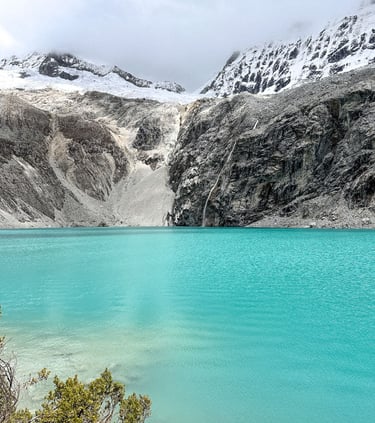

Day 10: Laguna 69
4,600 meters above sea level • 800 m Elevation • 14 km Roundtrip • 5 hrs
Laguna 69
Sleep in, eat a big breakfast, and let your body rest. Yesterday was a long day that started in the middle of the night. Get ready for your final summit to Nevado Mateo by renting all the necessary equipment and clothes.


Day 11: Recovery and Preparation Day
3,000 meters above sea level
Trying on equipment for Nevado Mateo
This is the real deal. A mountaineering-style ascent that requires crampons, an ice axe, and a guide. You’ll start in the dark, hike up a glacier, and reach the summit just as the sun hits the peaks. It’s cold, tough, and absolutely worth it.
How to get there: Organise with Akilpo Hostel in advance.

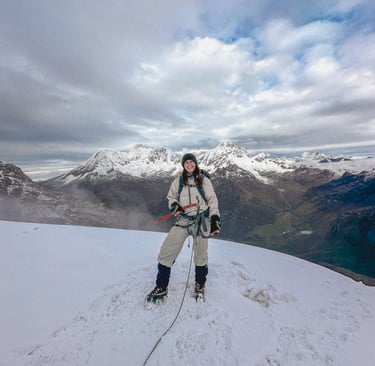
Day 12: Nevado Mateo Summit
5,150 meters above sea level • 400 m Elevation • 3 km Roundtrip • 4 hrs
Me on the summit of Nevado Mateo
Reflect on everything you’ve accomplished — you’ve climbed to over 5,000 meters! Maybe treat yourself to a massage or a nice dinner at Hierba Buena.
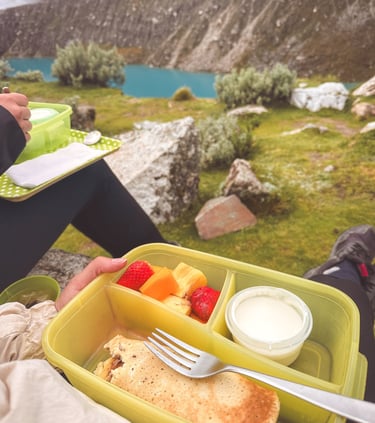

Day 13: Recovery Day
3,000 meters above sea level
Lunch after Nevado Mateo
Take a bus to Lima or continue your journey north to Chachapoyas (with stops in Trujillo and Cajamarca).
Day 14: Departure
3,000 meters above sea level
FAQ
Where to stay?
Montañero Hostel (9 USD/N): Budget-friendly, family-run, and flexible. The location isn’t perfect, but the staff are incredibly kind and helpful. We returned here twice.
Akilpo Hostel: Even if you don’t stay here, it’s a great place to book hikes and get local advice.
Where to Eat?
Hierba Buena: A must-visit. This cozy spot serves creative Peruvian dishes with fresh ingredients and a warm atmosphere. It’s a bit pricier, but absolutely worth it for a special meal. They also make very good drinks.
How to Get to the Cordillera Blanca?
From Lima: Take an 8–10 hour night bus to Huaraz. Book via RedBus or directly at the terminal.
From Trujillo: Regional buses are available, though less frequent.
Should I book activities?
Many can be done independently if you’re comfortable hiking on your own.
For advice or bookings, Akilpo Hostel is the place to go — they know every trail, help with logistics, and offer fair prices.
Most hikes and day trips in Huaraz can be arranged once you arrive.
What should I pack?
Clothing: Bring warm layers, a waterproof jacket, and clothes you can easily adjust as temperatures change — it can go from sunny to freezing in a few hours.
For the hikes: Always carry snacks and plenty of water. The altitude makes every step harder, so staying fueled and hydrated makes a big difference.
Equipment: Most gear — like walking sticks, snow boots, tents, or even ice axes — can be rented locally if you don’t want to bring your own.
When is the best time to go?
May - September: Dry and best for trekking.
I went in both October (2023) and January (2024), and both times it was too wet to do the Santa Cruz Trek.
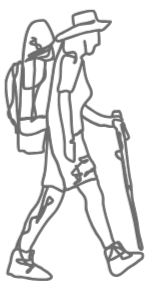

Final notes
This itinerary is built for hikers who want to explore the Cordillera Blanca in depth. You can adjust the number of hikes depending on your energy, altitude adaptation, and time.
If you have more time and want to take it further, consider the Santa Cruz Trek (3–4 days). I didn’t do it myself, but it’s one of the most famous multi-day treks in Peru and often recommended by other travelers. I've even met other travelers who did it by themselves.
Adjustments to the plan
The Santa Cruz Trek is one of the most popular hikes in the Cordillera Blanca and can be done both independently or with a guide. We didn’t do it because we were there between October and January, when heavy rains are common. If you’re visiting in the dry season, it’s a great addition to this itinerary — or even a replacement for some of the shorter hikes.
